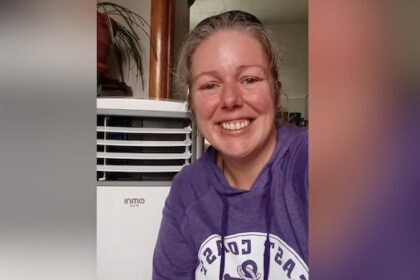New Brunswick·Ann’s EyeWomen from across three generations gathered at Elder Maggie Paul’s house in Sitansisk (St. Mary’s) First Nation to talk about the joys and challenges of being drummers.Young drummer says group of ‘trailblazers’ inspired her to sing and drumCBC News · Posted: Nov 23, 2025 5:00 AM EST | Last Updated: November 23Listen to this articleEstimated 3 minutesThe audio version of this article is generated by text-to-speech, a technology based on artificial intelligence.This group of women gathered at Elder Maggie Paul’s house in Sitansisk (St. Mary’s) First Nation to talk about the joys and challenges of drumming. (Ann Paul/CBC)This is part of a series called Ann’s Eye, featuring the work of Ann Paul, a Wolastoqey content creator. You can see more Ann’s Eye pieces by clicking here.For Alma Brooks, the drum is the woman. The drumsticks represent men, but the heartbeat of the drum is only possible with the woman, who’s the drum itself. “You can’t have one without the other,” she said, speaking with a group of women around the kitchen table of Elder Maggie Paul in Sitansisk (St. Mary’s) First Nation. WATCH | Young Indigenous drummer on the impact of older drummers: :Ann’s Eye: 3 generations of Indigenous women talk about their drumming journeysA group of women across three generations gathered at Elder Maggie Paul’s kitchen table to talk about the joys and challenges of drumming as Indigenous women.Three generations of women had gathered there to talk about women and drumming, many of them members of Sisters of the Drum. Some had been drummers in the 1970s and had taken the drums into prisons to play for Indigenous people there. “It was women who brought the drum back here,” Alma Brooks said, referring to both the big drum and the hand drum. “It was also the women who brought the drum into the community. We were trailblazers.”Some talked about how they’ve faced challenges as women drummers and the criticism they received. “The woman is the heartbeat of the drum, but we can’t touch it, we can’t sit at it?” Krista Paul asked. “That doesn’t make sense to me, and it really hurts me.”Purity Moore is a drummer from Bilijk (Kingsclear) First Nation. (Ann Paul/CBC)Purity Moore, a drum carrier from Bilijk (Kingsclear) First Nation and the youngest drummer there, never saw a woman drummer when she was young, but she would watch and listen and sing.“Once I started, it was hard to get me to stop,” she said. One of the first songs she ever learned was The Humble Song, from Maggie Paul.“It was you who taught me that it was OK,” Moore said to the elder. “People get so wrapped up in what other people are going to think, but the way I see it is, seeing Maggie and seeing you guys do what you do, that impacted me, and I’ve carried that for a really long time.”Some of these women have been drumming since the 1970s. (Ann Paul/CBC)“It changed how I see the world as an Indigenous woman.” Moore, a student at St. Thomas University, said drumming has positioned her as a leader on campus, and she hopes young Indigenous girls will see her and want to become drummers, too.“You guys lit that spark in me,” she said. “I want to light that spark in others.”Ann’s EyePhotographer Ann Paul brings an Indigenous lens to stories from First Nations communities across New Brunswick. Click here to see more of her work. (CBC News Graphics)
Tuesday, 25 Nov 2025
Canada – The Illusion
Search
Have an existing account?
Sign In
© 2022 Foxiz News Network. Ruby Design Company. All Rights Reserved.
You May also Like
- More News:
- history
- Standing Bear Network
- John Gonzalez
- ᐊᔭᐦᑊ ayahp — It happened
- Creation
- Beneath the Water
- Olympic gold medal
- Jim Thorpe
- type O blood
- the bringer of life
- Raven
- Wás’agi
- NoiseCat
- 'Sugarcane'
- The rivers still sing
- ᑲᓂᐸᐏᐟ ᒪᐢᑿ
- ᐅᑳᐤ okâw — We remember
- ᐊᓂᓈᐯᐃᐧᐣ aninâpêwin — Truth
- This is what it means to be human.
- Nokoma












